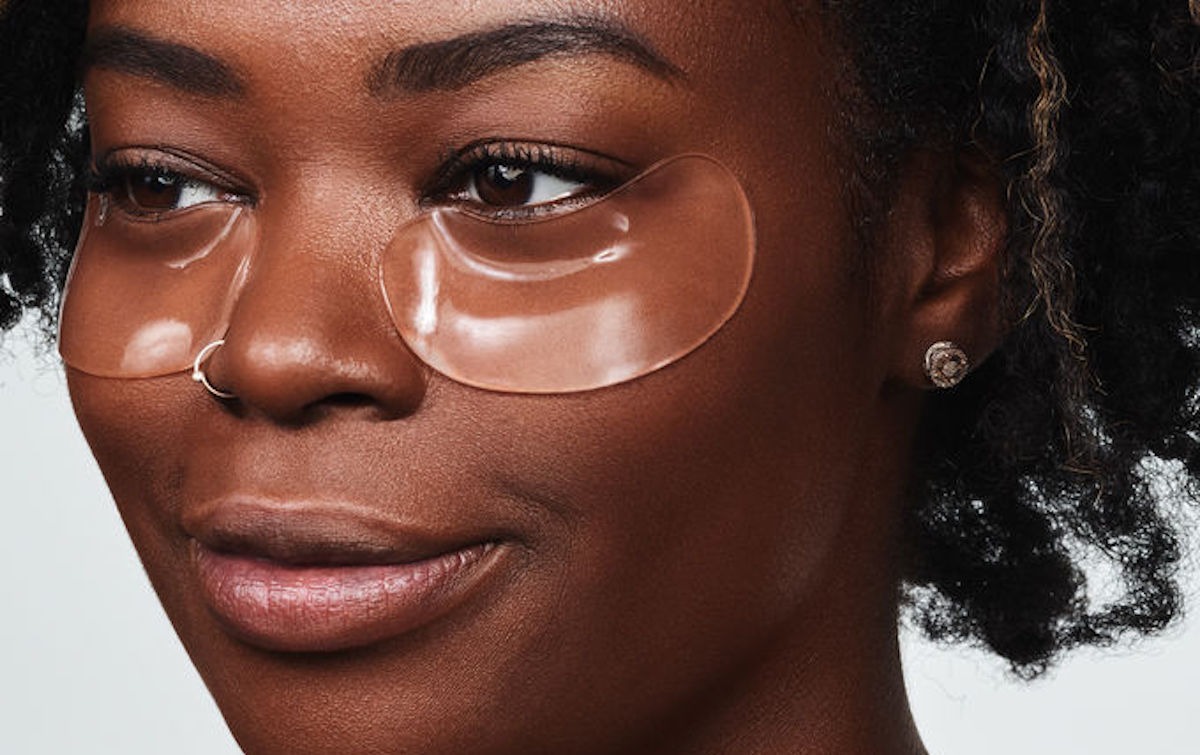If your eyes are a window to your soul, then you should take care of the skin around you as much as possible. “The area around the eyes is one of the thinnest and most sensitive areas of your body. It is also one of the first to reveal the first signs of aging, such as fine lines, “says Lauren Fine, MD, a certified dermatologist at Chicago Cosmetic Surgery and Dermatology in Illinois.

Why? As a study published in Advanced Biomedical Research in 2015 shows, the skin of the eye area does not have as many sebaceous glands and collagen as the rest of the face and body, which makes it more prone to dryness, sagging, lines and wrinkles. In fact, a study published in Clinical Anatomy in September 2015 concluded that skin areas with fewer sebaceous glands (oil glands) are less dense and more prone to wrinkles, which is why crow’s feet are such a big problem.
3 Tips and tricks for Caring for the skin around the eyes
1. Undertake to treat the skin of your eyes
“Eye creams are one of the things that people forget and don’t use often,” says Michele Green, MD, a board-certified dermatologist in New York City. “You need a moisturizer that can penetrate the area to provide the moisture you need.”
2. Don’t rely on your usual facial moisturizer to get the job done.
Many patients ask Dr. Fine if they can use their usual moisturizer for their eyes, and most of the time the answer is no, she says. “You need an eye cream designed specifically for the skin of the eyelids,” says Fine. Facial serums and moisturizers may contain active ingredients such as retinoids, which are present in too strong a concentration for the skin under the eyes.
3. When choosing an eye cream, opt for Active
Just because it’s a sensitive area doesn’t mean you need a gentle moisturizer. One of the best to look for is an eye cream that contains retinol, a derivative of vitamin A, says Dr. Green. An eye cream that contains retinol is different from a typical face cream with retinol. Due to the risk of irritation, it is used specifically with a lower concentration of retinol and a more emollient (i.e. moisturizing – look for ingredients such as hyaluronic acid) base formulated to increase hydration and reduce the risk of irritation.
RELATED: Why do you have dark circles Circles and swelling
Tips to address the most common skin problems of the eye area
These are some of the main concerns about the eye area that dermatologists hear and their suggestions to address them.
Circles
While they are associated with lack of sleep, sometimes they are not eliminated by constantly logging eight hours a night. That’s because dark circles have a genetic component, Fine says. “These are hard to clear completely, but there are some nice topicals that contain caffeine or vitamin K that can help with blood circulation to clear the circles,” she says.

Swollen bags
If you wake up bloated, it may be due to fluid that has accumulated under your eyes during sleep, according to the Mayo Clinic. If this is a common scenario for you, buy a jade roller and store it in your refrigerator. (Buy one that has the shape of a small ball so that it is suitable for this smaller area.) Immerse the scooter in the eye gel in the morning and gently roll it over the bags, suggests Green. Although there is no scientific evidence that jade rollers definitely reduce swelling, some dermatologists, including Green, recommend using them in the cold on the eye area, as the cooling effect helps to reduce swelling. Cold temperatures reduce blood flow to reduce swelling of the eye area, according to Johns Hopkins Medicine.
Fine lines and wrinkles
Opt for a retinol or an eye cream with peptides. Retinol and retinoid are derivatives of vitamin A, which stimulate the renewal of skin cells and the production of collagen. “Retinol helps with the overall texture and penetrates deeper into the skin structures to revitalize wrinkles and improve the appearance of fine lines,” says Green. Use an eye cream with retinol at night. For the morning, she recommends an eye cream that contains “green tea, an antioxidant ingredient that protects the skin from environmental stressors that contribute to aging.”According to a review published in February 2019 in the journal Nutrients, green tea polyphenols, which are antioxidant compounds, neutralize aging free radicals in the body, reduce the risk of sunburn and reduce the activity of an enzyme that breaks down collagen in the skin. The result: less UV damage and fewer lines and wrinkles.
Redness and irritation
“Given the thin and sensitive skin, it may take longer to recover,” says Fine. If you are sensitive to an ingredient in one of your products, such as fragrances, preservatives or natural plant extracts, the eyes are usually the first area that causes irritation, or the irritation may be more extreme here, she says. In this case, contact your dermatologist. “It’s better to treat it immediately [and identify the offending product]; otherwise, it may take weeks or months to get it back to normal,” she says.
RELATED: Is this rosacea or do I have something else?
Are eye creams or eye gels better?
This question depends on your skin type or main concern. If you have dry eyes by nature, you should choose a cream that contains less water than a gel, which allows it to be better hydrated. “A gel alone will not moisturize enough,” says Fine. On the other hand, if you’re dealing with bags under your eyes, then a gel might be perfect for you, adds Green. “I love the eye gel. I keep mine chilled. If you apply it, any swelling will disappear immediately, “she says.
RELATED: 15 Burning Questions about Retinol, answered
How to apply eye cream or gel correctly
For applying an eye cream or gel, Green recommends using the finger with the lightest touch, usually the little finger. Gently pat the area under the eyes until it is covered. This will ensure that you do not pull on this delicate skin, as you would if you smeared it.
Dermatological methods for the treatment of eye problems
Sometimes an over-the-counter solution just doesn’t work. Fortunately, there are more powerful solutions in the practice of your dermatologist. Here are some procedures and treatments that you can ask about.
For the darkness under the eyes, hyaluronic acid fillers can help
According to an article published in plastic surgery clinics in January 2015, the injection of a small amount of hyaluronic acid, a common filler, can fill the small groove near the lacrimal canal. Since the skin here is very thin, as research has shown, this procedure should be performed by a qualified provider. For people in their twenties and thirties, their “dark circles respond wonderfully to this treatment,” Fine says. By filling in this space, the way light is reflected in this area changes, which makes the eyes look clearer and brighter. With a topical anesthetic, the injections produce minimal pain and last for 9 to 12 months, she says.
A different approach might be warranted for people in their forties and fifties, she says. “Bone changes often occur, as well as the slipping of deep fat pads due to the loss of fat and collagen, which serve as a support for the area,” says Fine. What you will see in the mirror are quite significant bags under the eyes, and the filling in the area of the lacrimal canal can not fix the problem. “In this case, I find that more robust fillers on the middle and side cheeks can help to improve the overall appearance,” she says.

In case of swelling or bumps under the eyes, surgery may be the only solution
“With the loss of collagen as the skin ages, the fat pad surrounding the eye can slip off and create a bulge that people perceive as eye bags around the eyes,” Fine explains. While a filling can sometimes help, the most reliable solution is surgery. Eyelid surgery is called blepharoplasty and can be performed on one or both lower and upper eyelids to treat bags under the eyes, wrinkles and swelling, according to the American Society of Plastic Surgeons (ASPS). In 2019, there were more than 211,000 eyelid surgeries, which cost an average of $ 3,300 each, according to ASPS. The most important factor in recovery is swelling and bruising, which lasts up to two weeks.




